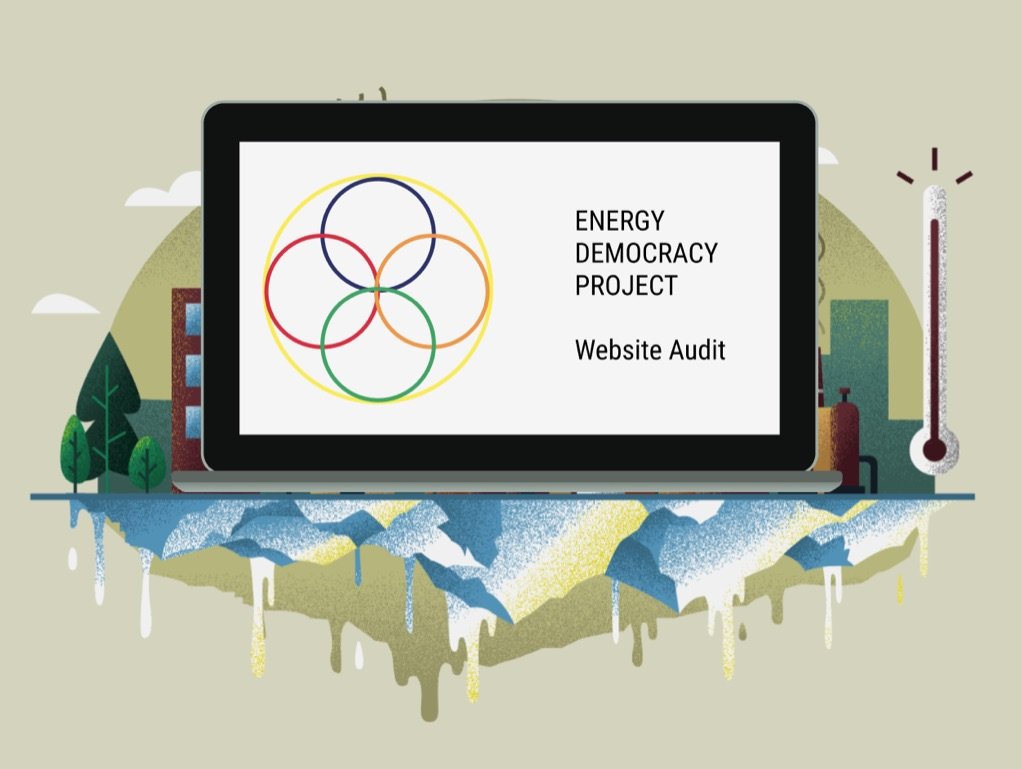Case Study | Design Audit
Website Audit
The Energy Democracy Project
I conducted a website audit for the Energy Democracy project in the span of a week. We didn’t have the time nor the need for a comprehensive audit.
So the team and I opted to focus on micro-sized approach that took a look at the website’s
Content
Design & Typography
Navigation & Structure
Accessibility & Compliance
Each of these points were judged under the microscope of heuristic compliance.
Background on the Organization
Project Goals
Project Overview
My Role
UX Consultant and Website Auditor
Tools
Figma
Timeline
1 week
My role was to point out what needed editing and provide examples on how to tackle that
The overall project goals were more comprehensive:
Edits to copy, UI elements to REFOCUS Campaign (their action demand related to Puerto Rico) and connect it to the landing page
Updates to copy on entire website that reflect findings from me, the focus group research from June 2023, and survey research from July 2023
Minor Wordpress design changes that streamline the user experience and more easily guide visitors to take action
Who they are
The Energy Democracy Project is a group of over 30 different organizations from various communities in the U.S. They work together to make energy more democratic, which means giving people more control and say over how energy is produced and used. Their goal is to promote the growing movement for energy democracy in the United States.
What they do
The Project serves as a collaborative platform, supporting various organizations in their mission to democratize energy across the United States. It provides valuable resources, assistance, and a shared space for these groups to work together and advance their efforts towards achieving a more democratic energy system.
I organized the audit in this manner. I described what the heuristic meant, labeled specific examples of what was wrong, and how to improve it in the takeaway section.
Audit Examples
The Audit Process
I started with a site map to identify parts of the website that felt cumbersome
Some pages were hidden within the hierarchy of other pages and the only way to return to a previous page would be to start the whole process over again. This part helped me ID where breadcrumbs would be nice to include.
The next step of the process was to conduct a website audit. Instead of a fullsize audit, we chose to do a microaudit that focused on heuristics
Visibility of System Status
Match Between System and Real World
User Control and Freedom
Consistency and Standards
Error Prevention
Recognition Rather Than Recall
Flexibility and Efficiency of User
Aesthetic and Minimalist Design
Help Users Recognize, Diagnose, and Recover from Errors
Help and Documentation
I wasn’t the one to carry out the design tweaks, so I tried to frame my critiques as suggestions. That way, if the designer didn’t think the feedback could be implemented they wouldn’t feel committed or compelled to integrate my feedback
Some challenges
Concluding Thoughts
Learning the company and trying to ensure the design suggestions were impactful.
Understanding code restrictions and if some edits would take too much time to implement.
Making sure to communicate my feedback in a way that someone who isn’t a designer would know how to integrate it.
Heuristic audits can lack context. By evaluating individual elements in isolation, without considering the overall context of the user journey or the website's purpose my recommendations might not align with the website's goals.
Identifying issues is one thing, but prioritizing them based on their impact and severity can be challenging without user data. This makes it harder to determine which issues are most critical to address first.
Key Takeaways
Despite not practicing any UI, I got to lean into more UX practices. I looked at competitors like the WWF and the Bill & Melinda Gates foundation to inform my suggestions and provide picture proof of design done right.
To mitigate any challenges a heuristic audit brings up, in the future I would combine heuristic audits with other evaluation methods, such as user testing, analytics analysis, and expert reviews, to gain a more comprehensive understanding of the website's strengths and weaknesses. Additionally, involving multiple auditors or experts ( like software engineers and copywriters) with diverse perspectives can help minimize biases and bring a broader range of insights to the process.








